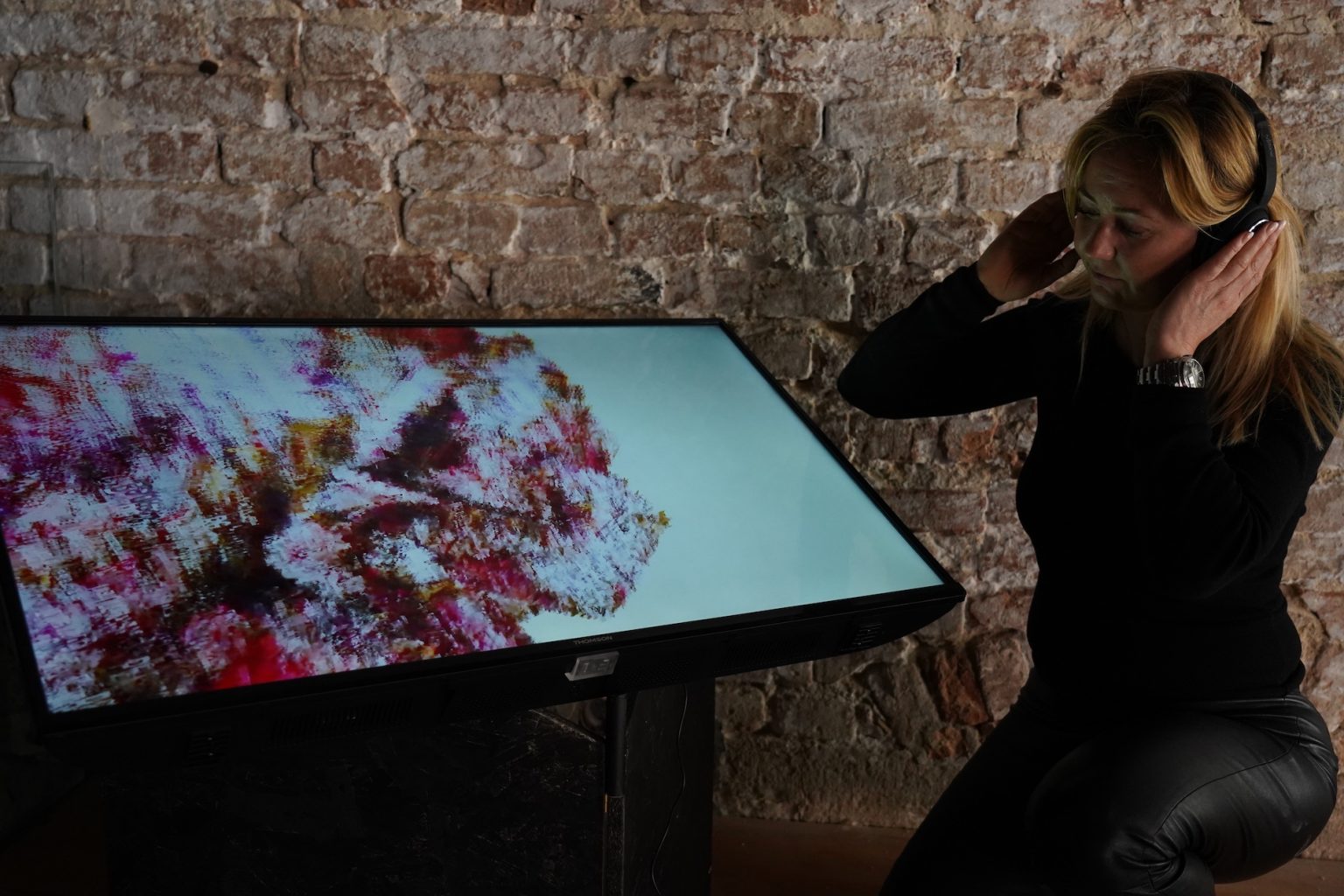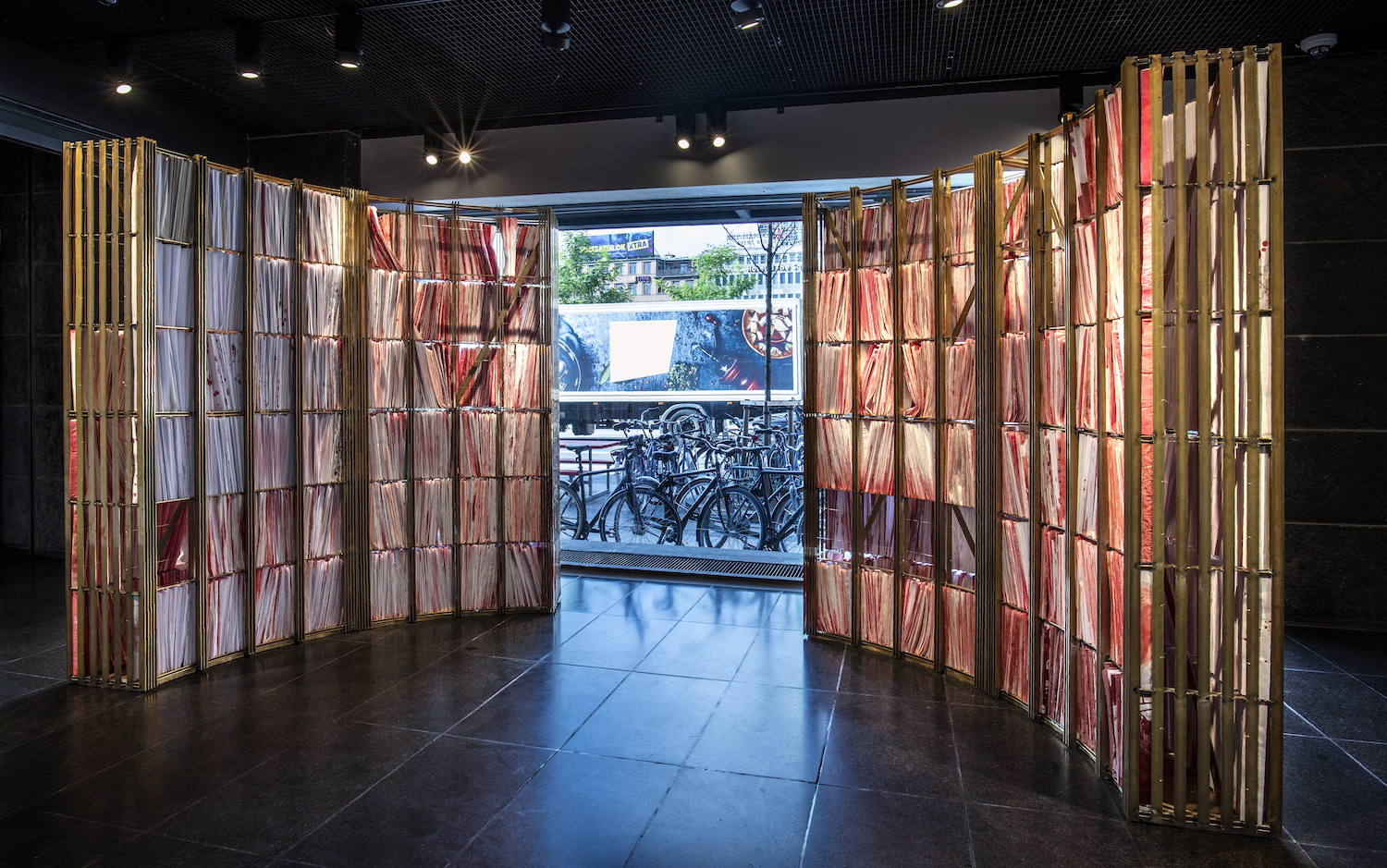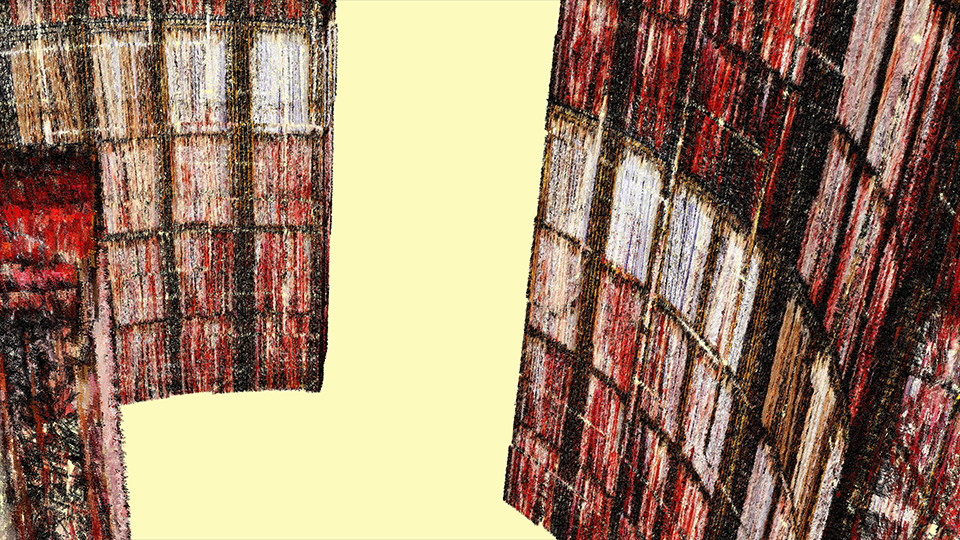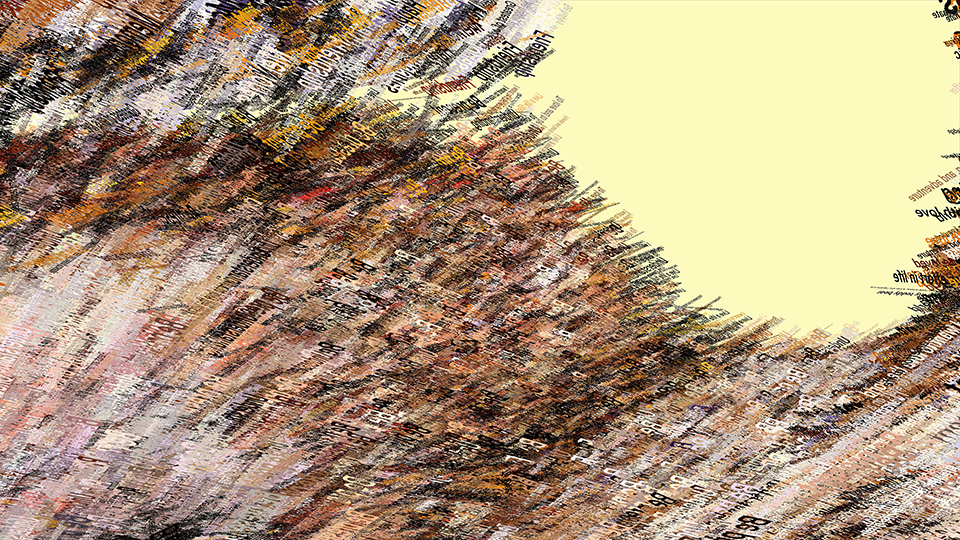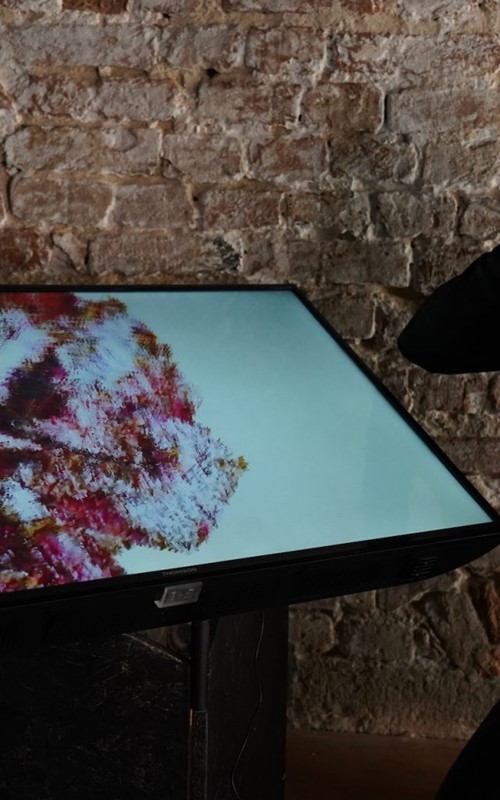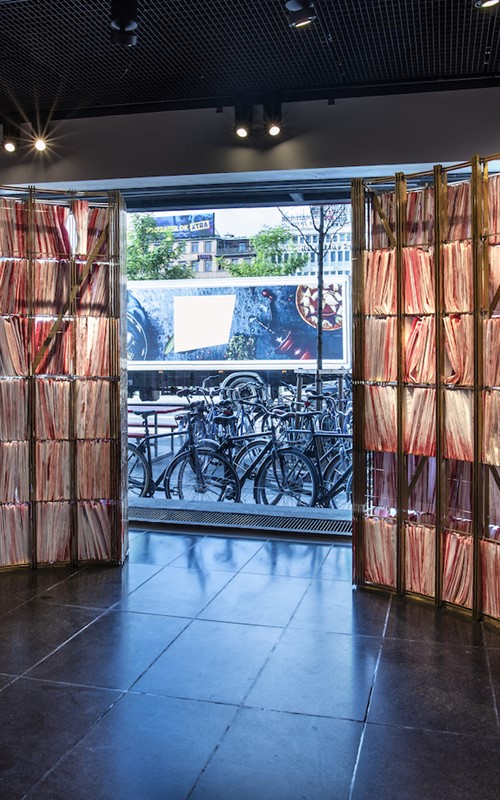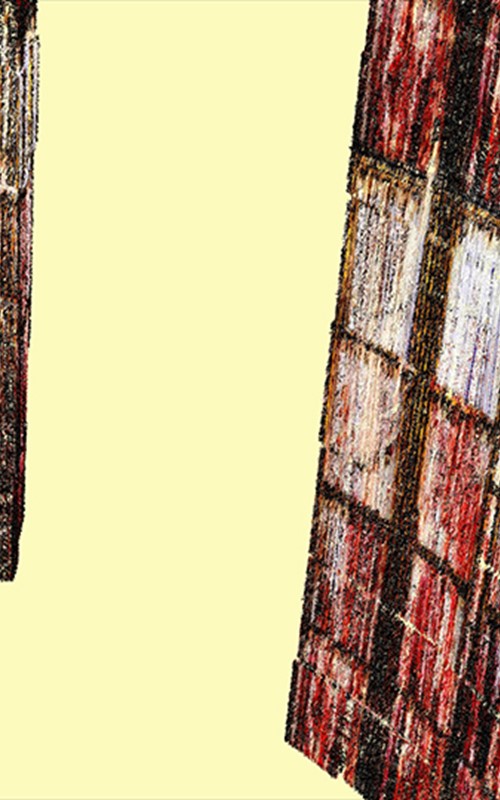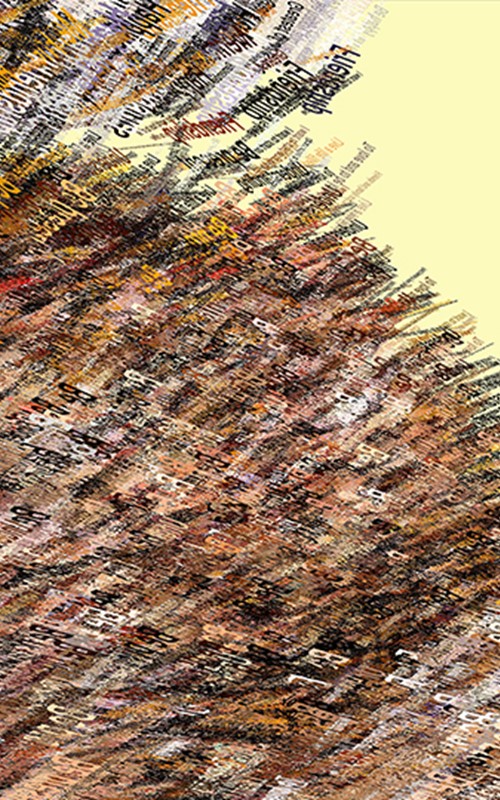Mille Kalsmose: "Art makes the NFT tangible and shows the potential of taking back the ownership of data"
Mille Kalsmose can be found at this year’s Venice Biennale as part of a group exhibition in Cameroon's Pavilion, where all artists work with NFTs. But what is an NFT at all, and how do you work artistically with these non-reproducible data pieces? We asked the artist.
Interview 31 may 2022 by Ole Bak Jakobsen
In an old mansion in Venice, you can experience the Danish artist Mille Kalsmose's flickering computer animation on a sloping screen on the floor. Here you look at the words and sentences filtered into something that resembles furry or textile clouds, giving you a sense of moving in and out through it. The work is part of the exhibition The Times of the Chimera at the Cameroon Pavilion at the Venice Biennale.
The starting point is, in fact, physical and material. The animation is based on Kalsmose's series of works Collected Memory, which was originally shown at the UN headquarters in New York and later in, among other places, Politikens Forhal in 2020. The physical work consists of two semicircular 'shelves' that function as an archive containing large amounts of handwritten sheets of paper, which the audience has created in the places, where the work has been shown.
As the first contributors to Collected Memory, the UN participants were able to write down their visions and hopes for the planet. The idea was that as people write down their vision of the world, fold the paper and put it back in the archive, it activates them both physically and sensually.
- "In the exhibition space at Politikens Forhal, the audience had the opportunity to write about their personal experiences of loneliness", explains Mille Kalsmose. “I asked questions like, ‘what does it mean for a person to have experienced loneliness”? Some used it completely ritually, simply stood and wept, while others used the work as an archive and let themselves be inspired by others.”
‘It helps when people care’, ‘Loneliness means feeling distanced to one-self’ are some of the statements which, in addition to being written down on paper and placed in the physical shelves, were also presented on Politiken's billboards at Rådhuspladsen in Copenhagen.
“It's about getting our feelings out and sharing them in a way that urges us to listen to them and give them value. Basically, my works are a kind of survival kits. To me, it is about the fact that I myself grew up lonely.”
At the same time, the work also creates a common, collective narrative of what moves us in these times. A chorus of remembrance woven together by single voices.
A digital branch with growing pains
In addition to the physical appearance of the work, it has also always had a digital branch, as all of these personal memories have been uploaded to a huge archive, which follows the project, no matter where it is set up in the world - and which is constantly growing, as people can contribute with more recollections on the project’s website.
It is this database that the artist has used to create the work Collected Memory - a Diary of The World in Cameroon's Pavilion - an exhibition organized by Global Crypto Art DAO; a pioneering collective working to support artists moving into the field of NFTs.
NFT, which stands for non-fungible token, is one of the major topics of conversation today. Many predict that it will totally change the art market, and the sale of digital art in the form of NFTs is making headlines.
Artists have been working with digital art since the 1960s, but one of the characteristics of these digital works were that they were very easy to copy and that there was basically no difference between original and copy.
In the recent years, however, we have seen a minor revolution. Blockchain technology, which is behind cryptocurrencies like Bitcoin, has, on the one hand, made it harder to counterfeit digital files, while the NFT’s have created the opportunity to create unique digital works and unique ownerships.
And it is this combination of security and unique digital files that provides the opportunity for the digital work of art to be compared to a unique painting that hangs on the wall of a museum.
We will return to Kalsmose’s interest in NFT’s, but first we’ll look at how the work for Venice came to be:
“Together with the developer Imre Petkov, we managed to import a 3D scan of the physical work together with the database's statements from the participants, which we combined and visualized digitally through a 3D program. It's very nerdy, but we created an algorithm-driven system to process large amounts of data visually. In this way, it was Collected Memory's own data that created the work's texture and form. Despite the digital universe, the form of the work, with the transformation of the three-dimensional object, manages to touch us and move in and out of us in almost the same movement.”
“Something always happens in the creation process, which I think is the most amazing thing about being an artist. The aesthetics are reminiscent of Virtual Reality, but when working with virtual reality, you usually have control over things. Here the material had its own opinion on what it wanted, and we had to ask: ‘What does it want’? We constantly had to get to know the material anew”.
"I was so excited about the aesthetics that emerged, but just as fascinated as I am, I am also critical of the reality that algorithm- and data-driven technological media constitute, and which are so influential in our everyday lives." Kalsmose points out that, for example, we give our data to the people and algorithms behind social media, knowing that no one - not even the programmers or developers - has complete control over what influence it ends up having on us.”
"And as government agencies increasingly integrate data and algorithms into the way we organize society, it becomes intimidating, because it creates unhealthy and unwanted cultures at the core of society."
But what is so interesting about the NFT?
“It is through the principle of ownership of the work that the NFT gets its legitimacy for people who work digitally. You have been given the opportunity to make something unique that is not found in other copies.”
“In the past, art institutions or collectors did not want to collect digital art. It did not make sense. It does now.”
The digital file that in principle abolishes the difference between original and copy is in its essence very democratic, right? Conversely, does the NFT not represent a return to the old art world with the exclusive originals?
“There is a bigger schism behind it all. It's about Web 3.0, which we are entering, and which everyone has an opinion on right now.”
“Web 1.0 was basic websites, Web 2.0 became mainly social media, which is owned by a few giants, Apple, Google, Facebook, who totally control our behavior and have everything on us. It may well be that it is all divided and exists infinitely, but there are a few who have the ownership. In Web 3.0, the hope is that we can re-establish the ownership and that there is no big tech giant at all.”
"There are pioneers in the field who see the NFTs as a new renaissance and compare it to when printing presses were created, which meant that it was not only the church and the princes who had the opportunity to spread their message. Other groups were given access to free speech”.
“There is a revolution happening. The great landmark is the NFT, which especially makes sense within and has been acquired by art. Art is super important in all of this. In fact, it is the one field that makes NFT’s more concrete. The art is our best bid at making the NFT tangible and show the great potential that exists for us in taking back the ownership of data", says Mille Kalsmose.
After the exhibition in Venice, Kalsmose's work will take the form of collectible objects of unique NFTs, each of which is part of the overall work. In this way it aligns with the way the work is produced:
Just as the work was created collectively by virtue of a large number of individuals' unique contributions, unique parts are now being extracted and sold to a group of potential buyers. Many will own unique parts of the same work.
The exhibition The Times of the Chimera in Cameroon's Pavilion takes place in Palazzo Ca ’Bernardo.
The Venice Biennale is open until 21 Nov.
Read the full article in Danish:
